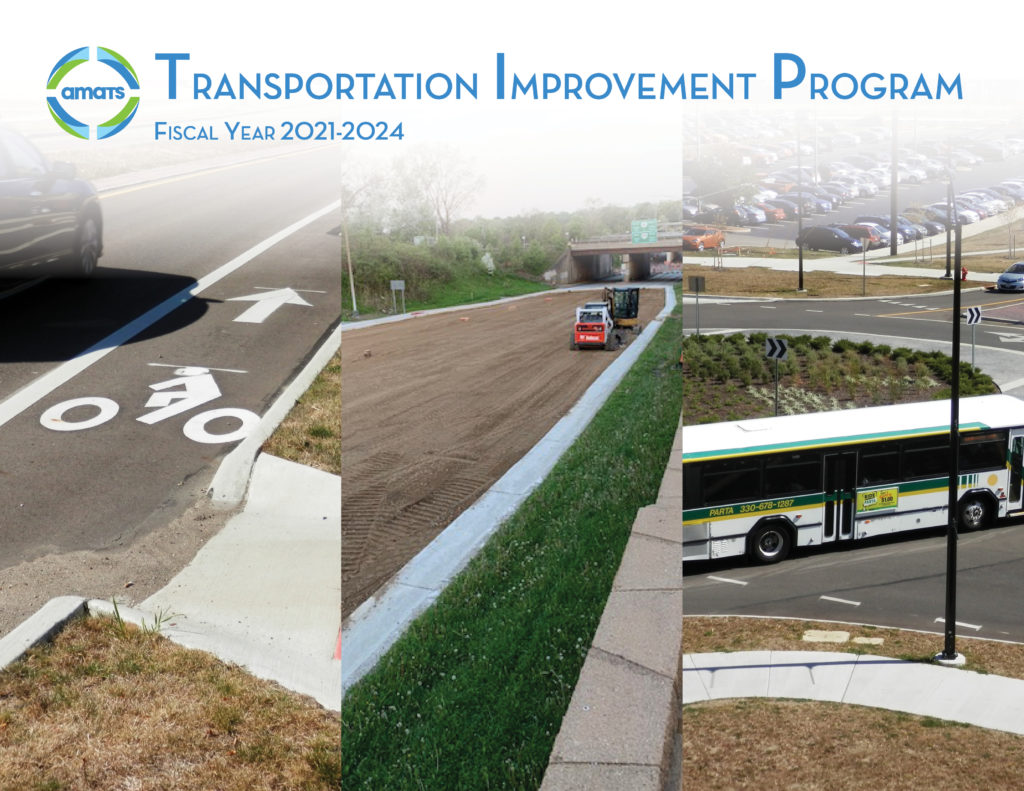What's New
Planning in a Pandemic
Curtis Baker, AMATS Director
“The COVID-19 outbreak impacted AMATS just like everyone else. “
A “First-of-its-Kind” TIP
Although the offices of the AMATS have been closed since March due to the COVID-19 pandemic, the agency has been open for business. In fact, it just completed a major planning milestone. The AMATS Policy Committee unanimously approved a four-year, multi-million dollar program of new highway, public transit, and bike and pedestrian projects for the Greater Akron area during an online, virtual May 14 meeting of the committee.
The new Transportation Improvement Program for Fiscal Years 2021 Through 2024 (TIP) represents a more than $993 million investment in regional infrastructure. AMATS Director Curtis Baker says that the new program may be the most expensive and comprehensive since the agency’s beginnings as a metropolitan planning organization in 1962.

The new TIP includes many significant improvements which should be of interest to anyone living, travelling or doing business in the region. The program includes more than $642.7 million for highway projects, $338.7 million for public transit needs, and slightly less than $12 million for bike and pedestrian projects. These projects are programmed to receive federal funds for fiscal years 2021 through 2024.
Communities and project sponsors throughout the Greater Akron area will benefit from the new program. Among the significant items in the TIP are two large-scale improvement projects in Akron: a $164 million project to resurface portions of state Route 8 and Interstates 76 and 77 and a $146 million state Route 8 bridge replacement over the Cuyahoga River Valley.
Other notable projects in the program include a more than $17.5 million upgrade of East Main Street (state Route 59) in Kent through the university area and the construction of two new roundabouts on Massillon Road (state Route 241) in Green totaling more than $10 million. Additional improvements include the construction of two-way left turn lanes on the Portage Trail Extension in Cuyahoga Falls totaling more than $7.7 million while portions of Second Street and Wooster Road in Barberton will see resurfacing and upgrades totaling more than $1 million.
“In keeping with our agency’s goal of preserving the region’s transportation network rather than pursuing costly expansions, our latest TIP has a record number of resurfacing projects that are programmed to use more than $18.3 million in federal Surface Transportation Block Grant Program funds,” Baker notes.
The new TIP addresses other needs beyond the area’s highways and roads. The region’s transit authorities, METRO in Summit County and PARTA in Portage County, will receive significant federal funds to supplement their fare box and countywide sales tax revenue and anticipated state funds during the four-year span of the program. The new TIP includes $40.6 million in federal funds for capital projects and $17.9 million in federal funds for preventive maintenance expenditures.
The Greater Akron area’s bike and pedestrian networks will continue their growth under the new TIP. More than $1.2 million will go for the construction of the Brady’s Leap Section of The PORTAGE Hike and Bike Trail in Kent. Other upcoming projects include new portions of the Freedom Trail in Akron, Kent, Stow and Tallmadge and various new sidewalks throughout the region most notably on Cleveland Massillon Road in Bath Township, Darrow Road (state Route 91) in Stow, and Raber Road in Green.
Baker observes that one of the more unique aspects of the latest TIP is how quickly the agency embraced new public outreach strategies and technologies during its development and ultimate approval by the Policy Committee.
“The COVID-19 outbreak impacted AMATS just like everyone else. We made the decision early on that public input was vital to this particular TIP’s development and so – along with updating our print ads and website – we extended our comment period to April 29 and launched far-reaching email and social media campaigns. We also made extensive use of Facebook Live and Zoom for our ‘virtual’ meetings,” Baker explains.
One of the earliest changes made by the agency was the decision to scrap an in-person meeting to present the Draft TIP due to social distancing concerns. The agency instead opted to host an April 2 virtual meeting using Facebook Live. Baker notes that this meeting posted a solid number of meeting participants and online viewings of the TIP presentation.
“The more we delved into these platforms, the more confident that we became with regards to their use. We gained enough expertise to host a virtual meeting of our Policy Committee during which the TIP was approved in a committee vote. That was a first for us,” Baker says. He adds that the agency’s virtual meetings were so successful that AMATS is considering hosting virtual meetings in tandem with its regularly scheduled in-person Citizens Involvement Committee meetings in the future. The TIP is available by clicking here.